Situated along the Elbe River, Pillnitz Castle, was once the summer residence for the Saxon royal court. Comprising the New Palace, the Hillside Palace, and the Riverside Palace, the castle complex has an impressive Baroque garden and expansive public park. Within the 28-hectare park, visitors can explore botanical wonders from across the globe, including the English garden, the Chinese garden, and a majestic 250-year-old camellia tree from Japan.
The Elbe River flood has left its mark on history, with one of the most notable occurrences happening in August 2002. However, after several years of restoration efforts, the Palace Museum in the New Palace proudly reopened its doors in June 2006, followed by the restored Palm House in 2009. Today, when the sun graces the castle grounds, its splendour rivals that of its bygone days. Many locals take a steamer boat tour from Dresden’s old town centre to Pillnitz Castle and spend a day there. Additionally, the castle offers accommodation options for those seeking an overnight stay.
Background of the Pillnitz Castle
In the 14th century, the castle grounds hosted a simple residential fortress, marking the humble beginnings of what we see today. However, the real transformation occurred during the 16th and 17th centuries when significant extensions were made. Interestingly, Elector John George IV of Saxony bought the property as a gift for his mistress, but fate took a sombre turn with their untimely deaths. Subsequently, in 1706, John George’s brother, Augustus II the Strong, gave the estate upon another mistress, Anna Constantia of Brockdorff. By 1715, the castle had been converted into an exotic summer palace, setting the scene for picturesque riverside celebrations.
Following this, a series of constructions and expansions began in 1720, continuing until 1725. These developments were heavily influenced by Chinese architectural styles, resulting in the addition of a charming Chinese pavilion and meticulously constructed garden. Then, in 1765, Elector Frederick Augustus I of Saxony, a great-grandson of Augustus the Strong, made Pillnitz his summer residence.
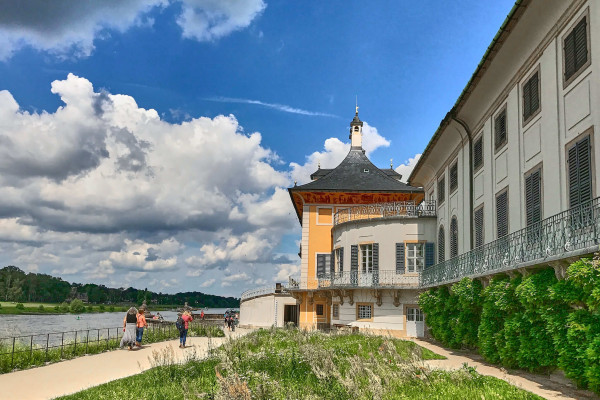
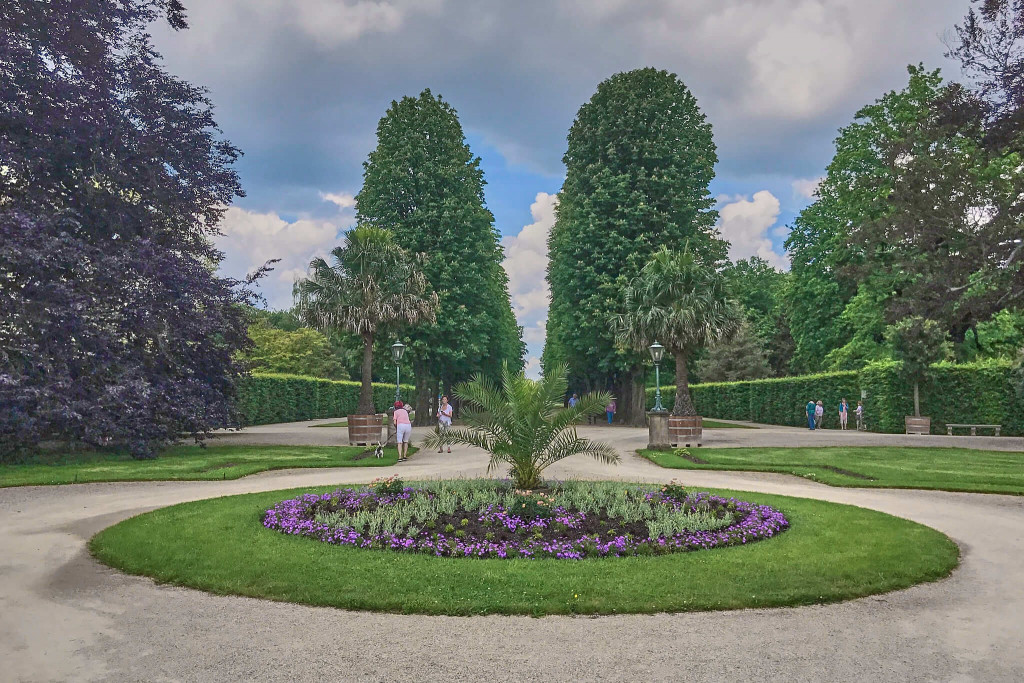
The suggested walking route
Exploring Saxony’s enchanting gardens at Pillnitz Castle is a leisurely activity, perfect for visitors of all ages. The first site next to the main entrance is the New Palace. In front of it is the symmetric Baroque garden with splashing fountain. To the left lies the Riverside Palace, its grand staircase cascading towards the Elbe river, while the Hillside Palace stands regally to the right. These sites connect seamlessly via trimmed hedges and picturesque parterres, while the Chestnut Allée adds a majestic touch as it stretches through the landscape.
As I meandered among the carefully hedged parterres, I came across the royal gondola. Following the paved pathway, I reached the quaint English Pavilion, consulting my park map to locate the ancient 250-year-old camellia tree nearby. Not far from the tree is the Orangery and Palm House, alongside the tranquil Chinese garden, offering a scenic shortcut to the Hillside Palace.
Within just a few hours, I admired the splendor of the palaces, walked through the fragrant gardens, and savored the aromas of blooming flowers and herbs. The panoramic views of the Elbe riverbank and encounters with exotic plants enriched my experience. Surprisingly, the park extended beyond my expectations to the northeast, revealing even more charming sites waiting to be discovered.
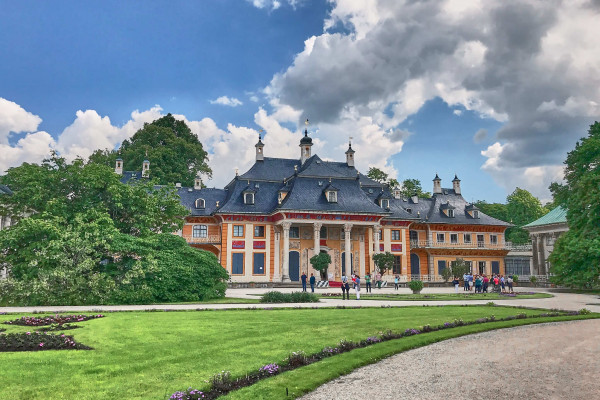
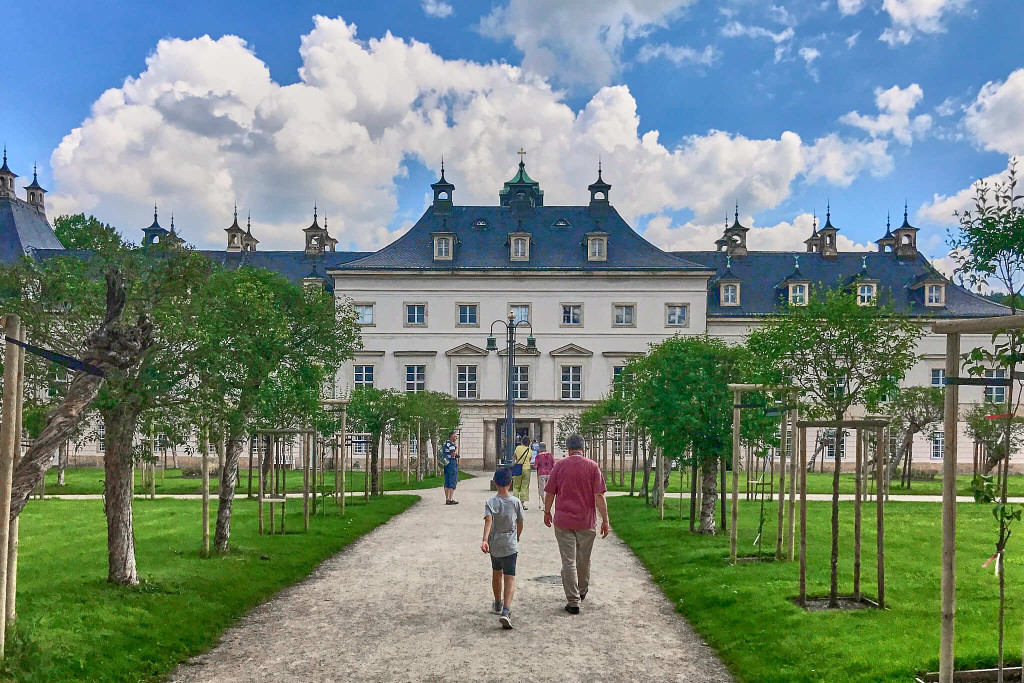
The New Palace
The Neoclassical New Palace
The construction of the New Palace began in 1818, following the destruction of the original Renaissance Palace in a fire. Within the New Palace, visitors can explore its rich history through a permanent exhibition. Key features of the palace include the impressive Domed Hall, serving as both a ballroom and dining area, alongside the Royal Court Kitchen and the Catholic Chapel.
Stepping into the Domed Hall, one is greeted by the serene garden, while intricate murals by Carl Christian Vogel von Vogelstein depict scenes from Rome. The grandeur of the hall is accentuated by six free-standing Corinthian columns on each side, supporting the majestic dome above.
Royal Court Kitchen
A highlight of the New Palace is its Royal Court Kitchen, featuring replica furniture and original copper cookware. Tragically, a fire in 1818 ravaged much of the kitchen. Despite efforts to restore it, the kitchen was repurposed after the Royals’ abdication in 1918. A reconstruction project commenced in 2000, reviving the kitchen to its former glory. It operated seamlessly, with chefs overseeing tasks such as tasting, frying, and baking, ensuring the royal family’s culinary needs were met.
The Catholic chapel
The Chapel is inside the New Palace. Constructed between 1823 and 1829, this single-nave Catholic court chapel graces the north wing of the palace. Despite its usual exterior, the chapel has opulent interior decoration, including murals by Carl Christian Vogel von Vogelstein. Collaborating with students from the Dresden Academy of Fine Arts, Vogel von Vogelstein brought to life the Mariological cycle al fresco. Remarkably, the chapel continues to serve the Catholic Church today, maintaining its sacred essence and historical significance.
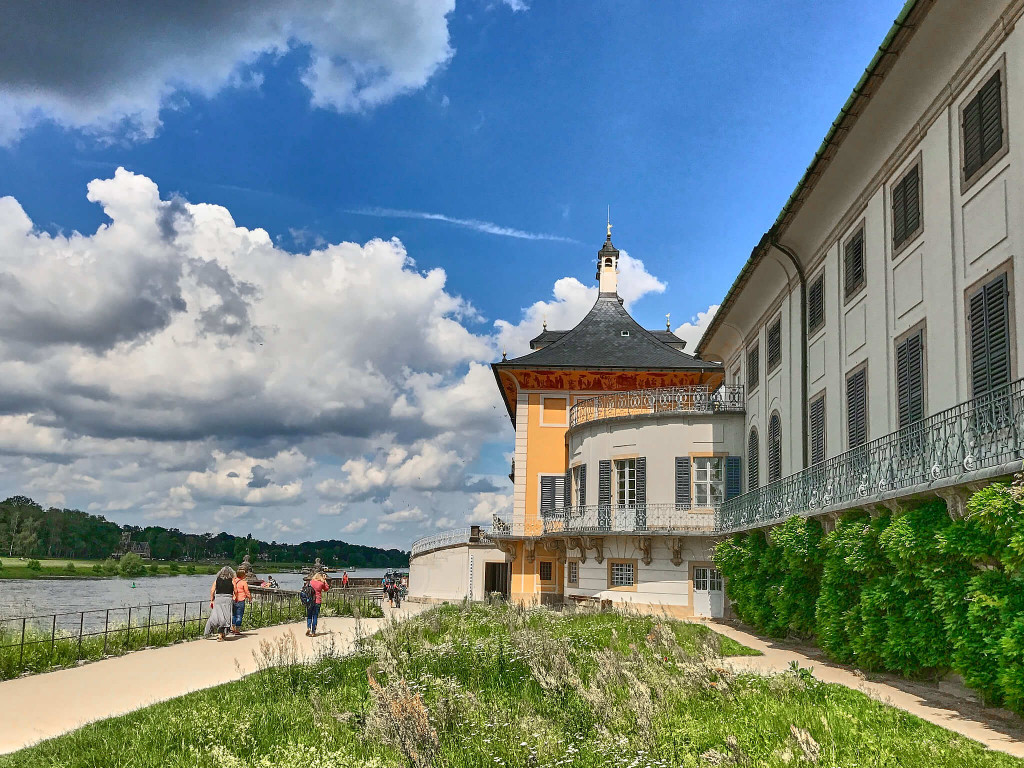
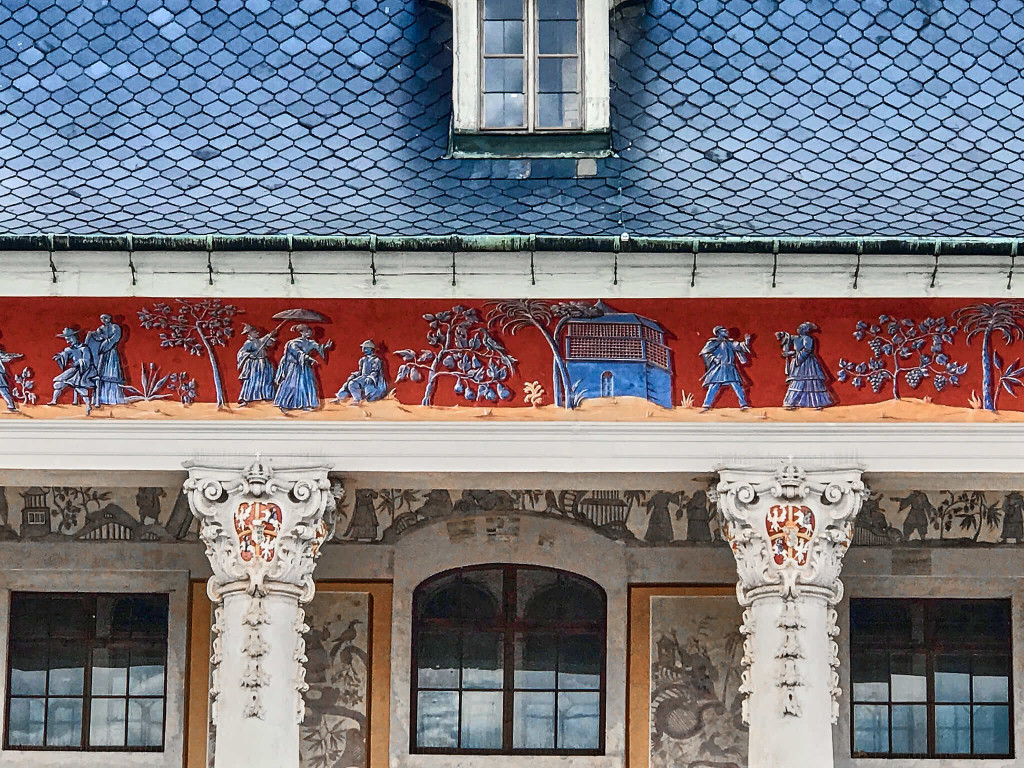
The Riverside Palace and the Hillside Palace
The Riverside Palace and the Hillside Palace houses the Arts and Crafts Museum. The museum exhibits furniture and ceramics from the 13th to 20th century. The original throne of Augustus II is on display too.
The palace buildings were initially made of stone. However, during the second phase of construction, the wooden side wings were replaced with stone structures. These were designed by Christian Friedrich Exner and Christian Traugott Weinlig, who also oversaw the castle’s interior design.
Riverside Palace
In the Riverside Palace, you’ll find a collection highlighting Saxon and European arts and crafts from the 17th and 18th centuries. Outside, the monumental staircase was constructed in 1725.
Hillside Palace
In the Hillside Palace, visitors can explore Dresden’s 19th-century lifestyle through visual presentations. Historical rooms like the Yellow Tearoom from around 1900, designed in Chinese style, are open to the public. Outside, orange-themed areas depict old Chinese lifestyles, reflecting the Asian-inspired Baroque trend popular among Saxon rulers of the era.

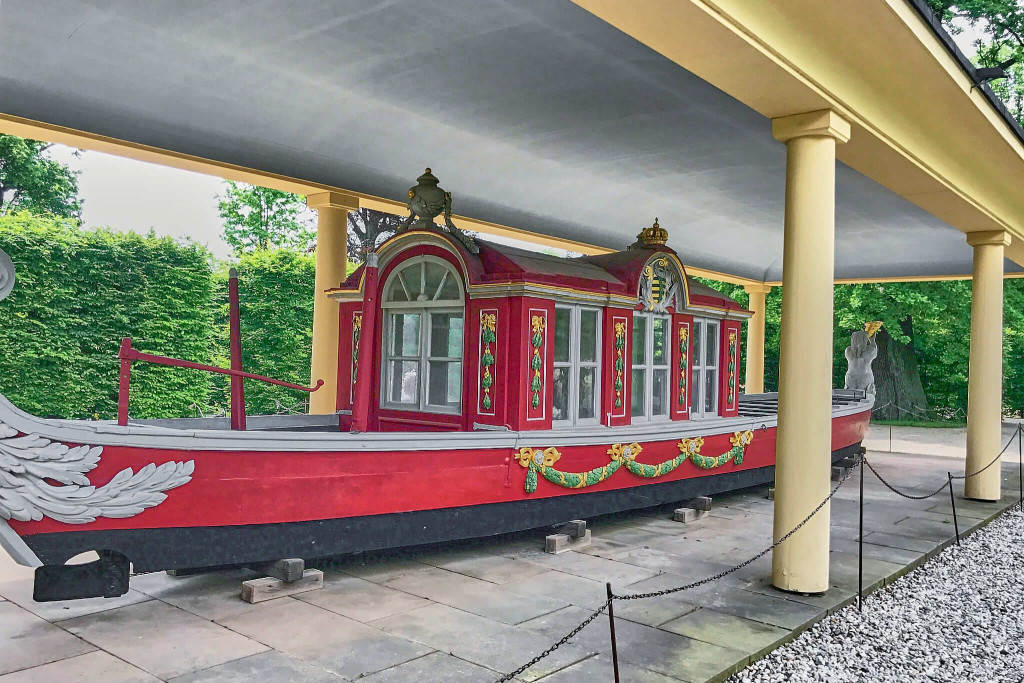
Main Features of the Castle Garden
Chestnut Allée
In the center of the Baroque flower garden lies a pond with a grand fountain. Stretching approximately 500 meters, the Chestnut Allée runs alongside the riverbank, flanked by neatly trimmed parterres filled with various plants, including flowers and herbs.
Gondola
In one rectangular fenced area is a Gondola on display, reminiscent of Augustus’s visits to Venice. He was so impressed by the gondolas in Venice that he used one to commute between Dresden and the palace.
English garden
Built in 1780, the English pavilion mirrors Donato Bramante’s Tempietto in Rome. Situated beside a pond in the English garden, a statue stands on the island at the pond’s centre. This statue, featuring the head of Juno Ludovisi, is a replica of a Roman marble head dating back to the 1st century A.D.
The camellia tree
Originating in Asia, the camellia tree reached Europe in 1776 as a potted plant, planted by court gardener Terscheck. Initially challenging for European botanists, it was shielded from harsh winters in Dresden with straw, blankets, and mats. In 1992, a 13-meter heated glasshouse was erected, providing optimal conditions for its growth. Today, this historic camellia boasts around 35,000 pink flowers annually, thriving under careful care.
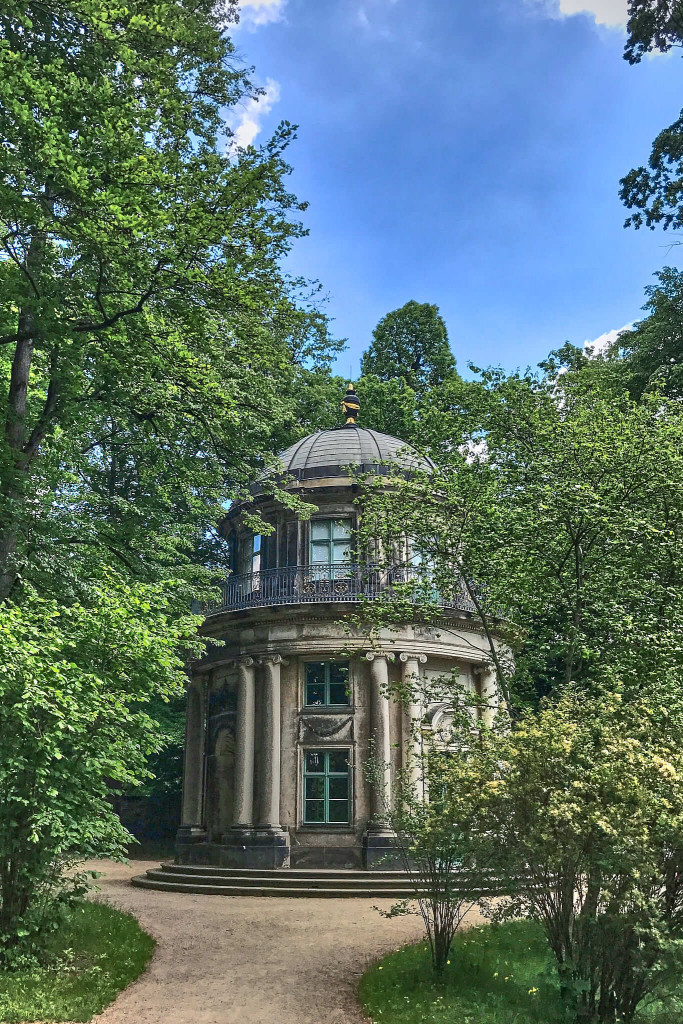
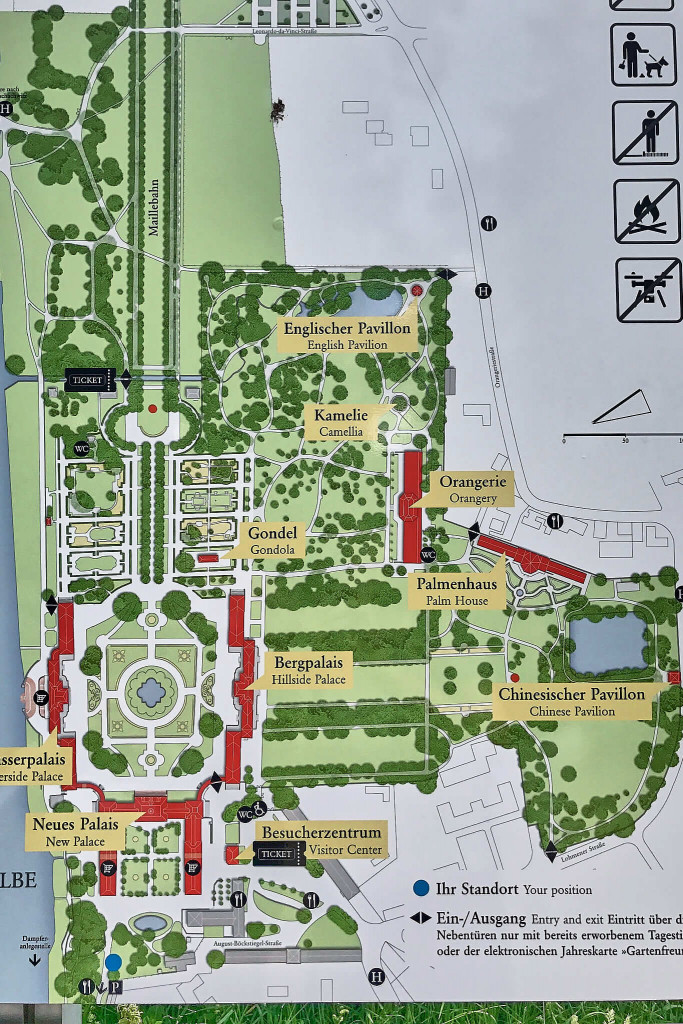
Palm house
Built between 1859 and 1861, the palm house is a modern cast steel engineering. Spanning 660 square metres with a length of 93.70 meters, it held the title of Germany’s largest greenhouse in the 19th century. Following a thorough restoration in 2009, the palm house displays plants from Australia and South Africa, housed in rooms with carefully regulated temperatures.
Chinese garden
The highlight of the Chinese garden? Definitely the quaint, genuine Chinese pavilion. Stepping inside, you’re greeted by eight stunning landscape paintings on the walls. Sadly, this little gem is off-limits to the public, so all I could do was steal glances at the paintings through the windows. Beyond the pavilion lies a pond serving as a reservoir for the castle’s water.

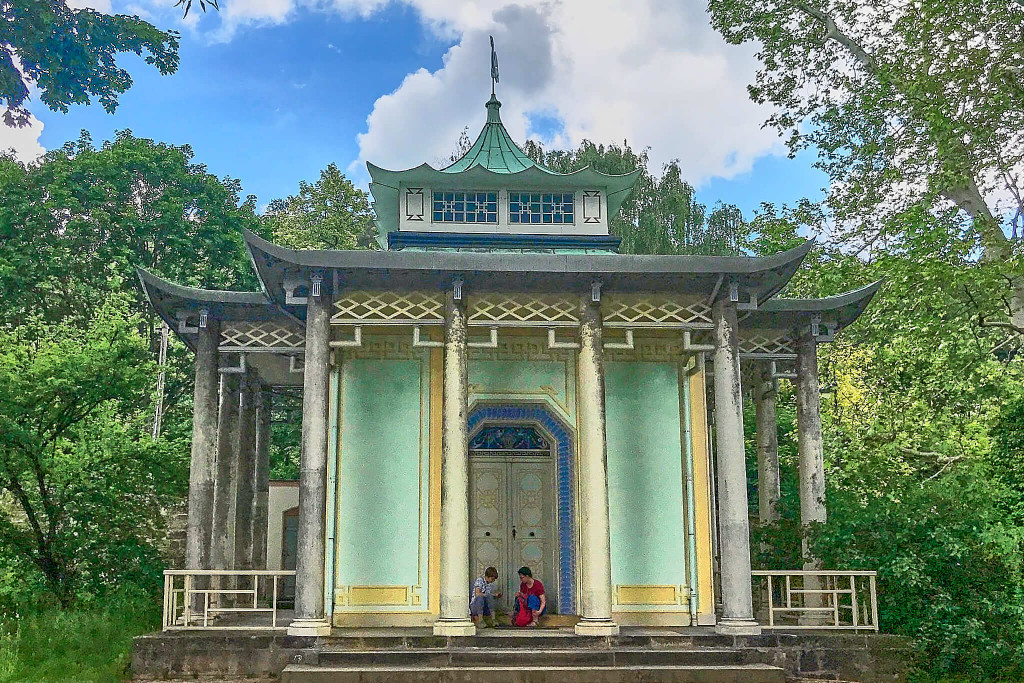
Travel Tips for Pillnitz Castle
How to get there
The most enjoyable way to reach Pillnitz Castle from Dresden is by Elbe river cruise, a vintage paddle wheel steamer. Departing from Terrassenufer in the old city centre, the steamer offers picturesque views along the way, passing three renowned castles – Albrechtsberg, Eckberg, and Lingner Castle – as well as the five iconic Elbe bridges.
Alternatively, you have the option to catch a bus or tram and transfer to a local ferry, or even cycle from Dresden along the scenic Elbe riverfront path. However, if driving is your preference, rest assured as there’s ample parking available nearby.
Schloss Hotel Dresden Pillnitz
Schloss Hotel Dresden Pillnitz sits within the environs of Pillnitz Castle. This privately run hotel enjoys a beautiful setting by the river Elbe, encircled by picturesque vineyards and fruit orchards. Just a stone’s throw away, at 150 meters, you can also take a ferry trip down the Elbe to the idyllic Sächsische Schweiz (Saxon Switzerland) region or the cathedral town of Meissen. Alternatively, you can hop on one of the hotel’s bicycles and traverse the picturesque Elbe cycle path nearby.
Throughout the warm months from April to October, the beer garden opens. You can enjoy beer and taste Saxon dishes with a nice view of the castle. However, as the chill sets in, retreat indoors to the cosy restaurant. Here, bask in the warmth of the crackling fireplace and dine on delicious Mediterranean cuisine.
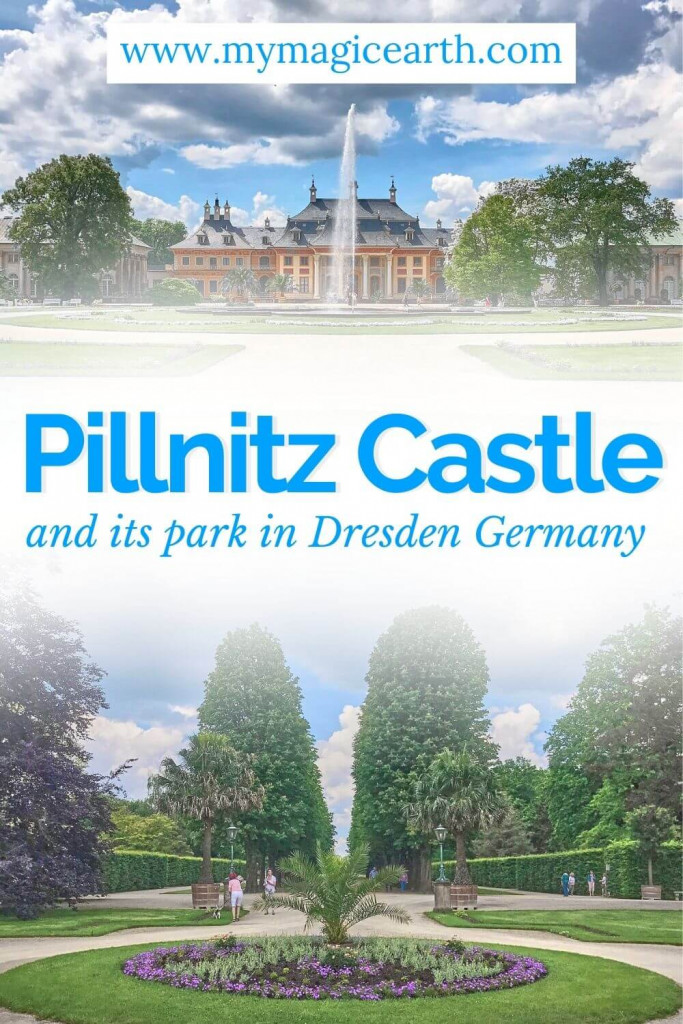
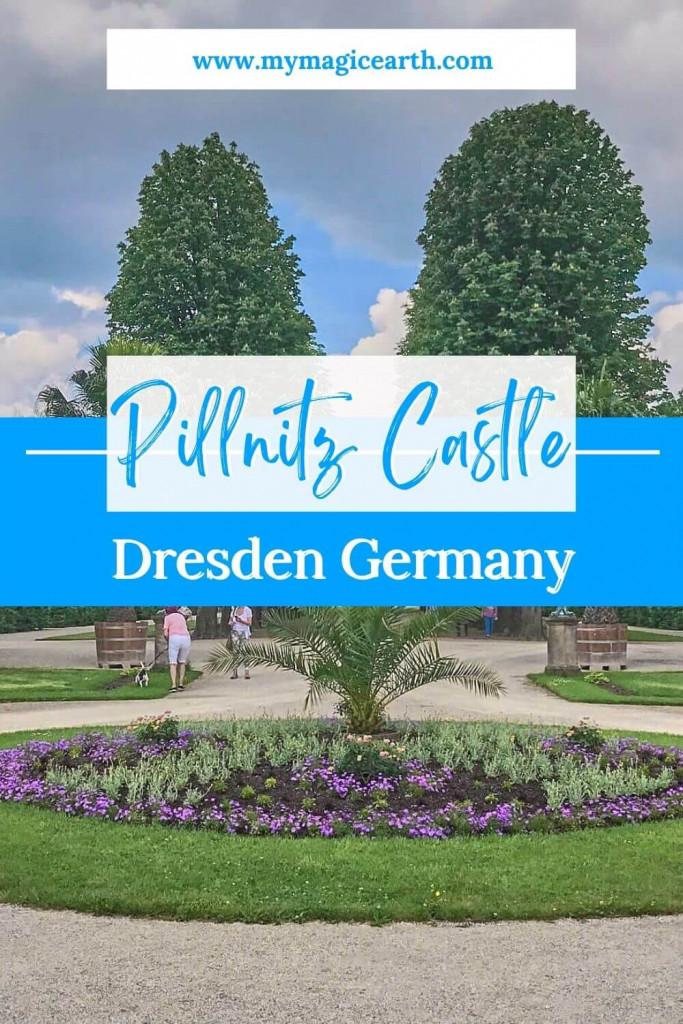
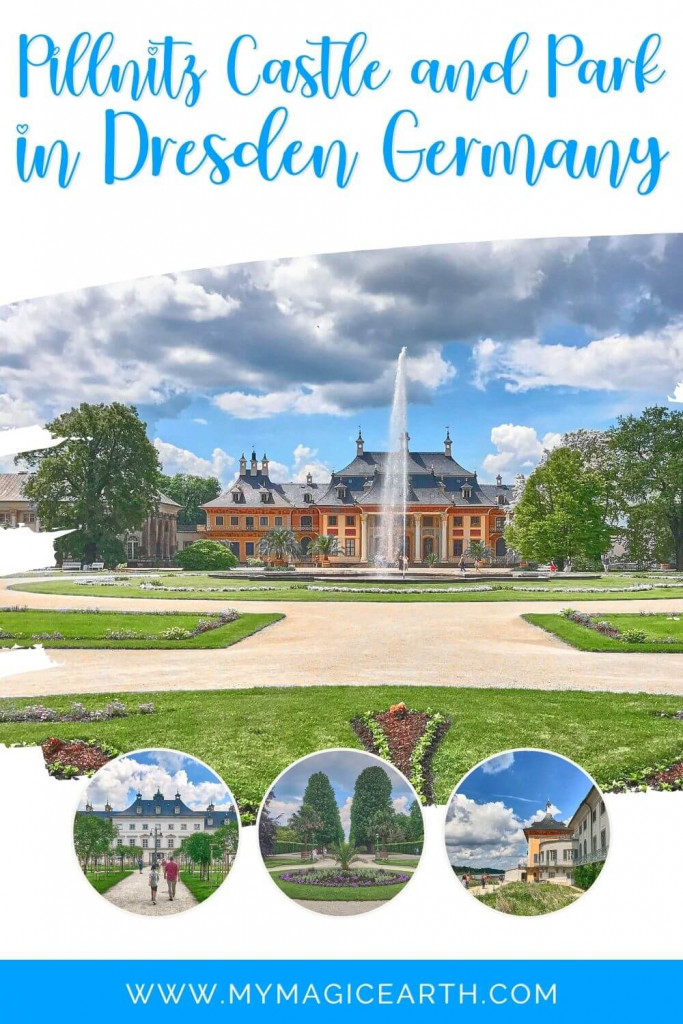

What a gorgeous castle with so many different park styles. I loved every bit of this walking tour. I fear that one day might not be enough given the amount to see and click. Loved your pictures, especially that of the English pavilion and the park. The New Palace from your description seems like a treasure trove of architecture. Is photography allowed within?
Wow..I enjoy visiting chateaus and castles anywhere. Pillnitz Castle looks so extravagant. The gardens are imply stunning. I am blown away by the location of it. It just takes you back to the bygone eras and gives you the glimpses of the lifestyle they used to have in the castle. Simply stunning.
I love visiting chateaus and castles while traveling abroad because it truly transports you back to another time. It’s an added bonus that you get to feel like royalty for a day! I was surprised to see how much influence the garden hard and borrow from the Chinese culture and traditions. I love how each intricate detail went into the gardens how each of those translated into such beauty. I’d love to stay at the hotel as well to really get the royal treatment.
I know that Germany has many wonderful castles and good to know that even Dresden also has a worth visiting castle. The new castle of Pillnitz looks great and thanks to you for sharing route maps for walking and other details. I would love to walk along the riverside of Palace of Pillnitz Castle.
Thank you for sharing this wonderful post. I haven’t been to Pillnitz Castle but it truly looks like an amazing place to visit. I will
absolutely keep this place in mind for any future visits to Dresden
I have an obsession with all things old. The Chinese garden looks so beautiful and peaceful. Would to recommend exploring on your own vs a tour? I know a tour can help bring the history into better perspective but do you think you can get as much out of it with a self guided tour?
Hi Corritta,
I don’t think I could get much out of a self-guided tour because the locals can tell you the hidden stories. And, some places might not open to the public but to the group visitors only.
Kindly regards,
Mijia
The first time I visited Pillnitz Castle was during a high school trip and I was instantly awed by the beauty of it. I haven’t visited after that but this article served as a great reminder that it might be a time to do that again. I would love to take another walk in that charming garden even today 10 years later. Thank you for sharing, this article brought back some very nice memories.
I love visiting castles. As most European mansions and castles, this too, looks beautiful. I visited Germany years ago but unfortunately didn´t see anything like this.
Pillnitz Castle looks extremely beautiful. I love the location of the palace as well as the greenery around it. What a rich history and grandeur is associated with this royal castle! The palace is definitely a worth visit. The Glass and steel house made to protect the Camellia Tree is just wow!
Pillnitz Castle and the gardens look so enchanting. They look straight out of a romantic classic of the medieval period. There are so much to see and experience here. I was fascinated to see a slice of Venice in the form of the Gondola. The place is indeed a great place to enjoy the charm of a grand period of history.
I’ve often seen photographs of beautiful castles in Germany but I don’t think I’ve come across much about Pillnitz Castle before, so really enjoyed learning about it. I love the different architectural styles on display because of the different eras in which parts of the complex were built, and the gardens look beautiful to walk around, especially to see the Palm House!
I love Pillnitz Castle! So many people miss this lovely palace when they visit Dresden! I cycled from the town to the castle in winter and I must go back in summer some time.
Last time when I was in Berlin, I so badly wanted to visit Dresden, but could not get time. I am jealous of you now a bit, I so much want to explore Pillnitz Castle. I can’t believe Schloss Hotel is located on the grounds of the castle.
This is super! My cousin, recently relocated to Dresden for higher education and I’m gonna send this to her so she has an interesting place to see in the weekend.
Built in 14th C? Wow, that’s indeed a lot of history to it!
So sad that the river floods have caused damage time & again. Good to know that they’ve restored it well now. The huge gardens sound so pleasing & serene. 250 year old tree is a definite must see.
This is so lovely. I would love to walk in the garden with the map like you did. I want to see the beautiful Royal Gondola and definitely opt for the costumed tour. Imagine going to all that trouble for saving a tree! I can imagine the passion of the people who preserved this.
Wow! This is really beautiful and such a wonderful experience. I am into gardening so I am really excited. I love smelling the scents of the flowers and herbs too. Hope to get to visit someday.
While I have been to Germany before, I have not been to Dresden. If I do venture there in the future, I would like to head to the Pillnitz Castle. Your description of the Royal Court Kitchen fascinated me. Additionally, I would like to wander the English Garfen and tour the Chesnut Allee.